Life and Love: Lessons Learned from a Reactive Dog
By Sidney Chow

As I sit here writing this article a little, speckled, dog lays at my feet. She is upside down, sound asleep, snoring, her paws paddling as she dreams of chasing rabbits. I smile. This month marks three years since this spunky, little, blue heeler came into my life. It’s hard to believe it’s been this long as I ponder how I got to this point.
This dog is my best friend, my most treasured companion, my pride and joy. Just a couple of months ago she received multiple ribbons at a rally obedience trial. On our walks around Wascana Lake I commonly get compliments about what a well behaved dog I have. But it wasn’t always this way. In fact, it’s been a long, hard road.
When Sami arrived at the Regina Humane Society as a stray she was morbidly obese, fear aggressive towards strangers, and also had significant wounds from being attacked by another dog. She required surgery to repair the deepest laceration and several weeks of antibiotics and topical wound management. As one of the veterinarians at the shelter I was tasked with her care. She quickly won the hearts of all the staff with her sweet, goofy personality. While I wasn’t looking for a dog I couldn’t resist her charm. I fostered her and then, ultimately, adopted her. As a veterinarian, I was well equipped to deal with her physical wounds and obesity. The wounds healed quickly and the weight melted off, however it became rapidly apparent that this dog had deeper mental and emotional issues that would take longer to heal, and that I was less prepared to deal with. Whether due to trauma associated with the previous dog attack and being a stray, lack of early socialization, poor breeding, crazy cattle dog genetics, or a combination of all of these things, Sami’s troubled behaviour emerged within a couple months of bringing her home. On walks she was severely leash reactive towards other dogs, bicycles, and rabbits. She would lunge, bark, snap, and scream (any of you who have ever owned a heeler know the exact high pitched, ear piercing, cry that I’m talking about). She was also extremely wary of strangers and wouldn’t hesitate to lunge and snap at anyone who attempted to reach a hand towards her. It was extremely embarrassing and also terrifying. I was horrified by the possibility of her potentially biting another dog or person.
Many in person training classes, books, podcasts, youtube videos, money, sweat, and, literal tears later I don’t have a perfect dog, but I have a darn good dog. This is not a story about how I trained my reactive dog, but rather how my reactive dog trained me. To be a better dog owner, as well as a better human being.
Humility
Owning a reactive dog is a practice in humility. Growing up I was lucky enough to be one of those people who was blessed with a “perfect” dog. Good breeding, well socialized, trainable, friendly, few, if any, flaws. Now don’t get me wrong, I’m not saying that owning this type of dog doesn’t teach you anything. I learned plenty from my first dog, but I also learned to have an ego. I’m not proud to admit it, but I was “one of those people” who judged others for having a misbehaving dog. I would see a person on the street struggling with a dog that was pulling, barking, or lunging, and my first thought was, “Geez. That person really needs to train their dog”. As if it was that easy. As the saying goes, “Don’t judge, lest you be judged” and, boy, did I learn that lesson the hard way. There’s a mantra amongst dog trainers that says, “You don’t always get the dog you want, but you get the dog you need.” It turns out that karma gifted me with a reactive dog so I could learn some important life lessons.
Empathy
Everyone is dealing with their own “stuff”. Whether related to dog training, or life in general, you can never know what another person is going through. Now when I see a person on the street struggling with a reactive dog, I try not to judge and instead I smile and say, “It’s okay. I understand”. I try to give people with reactive dogs space, by moving off the sidewalk or crossing the street, and getting my own dog under control so they’re less distracting. If I see someone actively working with their dog on training I try to say “nice work” or “what a good dog”. This mindset has also transferred into other parts of my life as well. If I experience poor customer service at a store, a rude coworker at work, or a disgruntled friend or family member, I try to remember to be patient and not to take it personally. You don’t know what someone else is going through. Maybe they’re just having a bad day. Life is hard. Be kind.
Grace
Owning a reactive dog I’ve consumed a lot of dog training advice (in person training, books, podcasts, youtube videos, etc.), but one of the most profound things I’ve learned is from a dog trainer named Susan Garrett who repeatedly says, “Our dogs are always doing the best they can, with the training they have, in the environment that we put them in”. When you’re having a tough day with your dog this is important advice to remember. Our dogs are not being spiteful, or “jerks”, they’re simply overwhelmed by a task or environment that they’re not prepared for. It’s important to give our dogs grace. At the same time we need to give ourselves grace. I used to really beat myself up about mistakes I made in dog training thinking that I was making Sami’s reactivity worse and, in some cases, that was probably true. But that’s okay. We don’t know what we don’t know. I like to think that as humans we’re also doing the best we can, with the knowledge we have, in whatever situation we’re dealing with. We all deserve grace. Our dogs, other people, and ourselves.
Patience
Another common dog training mantra is to, “Train the dog in front of you”. This means that you should not be comparing your current dog to the “perfect” dog from your childhood,the dream dog you had been hoping for, or the canine prodigy in your obedience class. Just because your previous dog learned a certain behaviour in one training session doesn’t mean that you should expect the same from your current dog. This is especially true when you have a reactive dog. It’s like having a special needs child. You need to have patience and work at your own pace. It’s not easy. Things will be slow. Some days it may seem like you’re not improving at all. And there will be setbacks. Oh boy, will there be setbacks. Reactive dogs are notorious for bringing out their worst behaviour just when you think things are getting better. But stick with it! Remember, progress not perfection. It’ll be worth it . . .
Gratitude
Each little victory with a reactive dog seems just that much greater! Reactive dogs help you to be grateful for the little things in life. The first time you go for a walk and your dog doesn’t lunge at someone you will be overjoyed. Or the first time your dog is able to play with another dog without getting into a fight you will be so proud of her. And when you receive your first ribbon at a dog trial (even if it was a novice ribbon that other dogs and trainers could get in their sleep) you will feel like you just won Best in Show! Reactive dogs help to remind us why we got a dog in the first place. It wasn’t as a status symbol or to win ribbons at competitions. It was so we could be reminded of the simple joys in life. Writer Milan Kundera wrote, “Dogs are our link to paradise. They don’t know evil or jealousy or discontent. To sit with a dog on a hillside on a glorious afternoon is to be back in Eden, where doing nothing was not boring – it was peace.”
Community
Owning a reactive dog can be an isolating experience. It’s frustrating, it’s embarrassing, and, especially if you have a large or powerful dog, it can even be frightening. If you’ve never owned a reactive dog before you might think that your dog is the only dog like this. All the other dogs you see walking down the street are so well behaved and well adjusted. Well, there’s a reason for this. It’s because owners of reactive dogs have a tendency to shut themselves out of the public eye, either walking their dogs at off hours, or not at all. One book about reactivity that I read was called the The Midnight Dog Walkers, the title of which sums up the experience perfectly. Trust me however, if you want to succeed with your reactive dog, or any dog or life problem for that matter, you can’t do it alone. The most beneficial thing I got out of taking Leash Reactivity classes was not the training
advice, but rather the community – the sense that you weren’t in this alone and that there were other people (a lot of them it turns out) that were dealing with the exact same problem. If it wasn’t for my reactive dog I wouldn’t have some of the amazing friends I have today. For some of these people we bonded over the shared hardship of owning a reactive dog, for others it was an act of kindness that they wanted to help me and volunteered their relatively “bomb proof dogs” to help me socialize Sami. It took an entire community of very kind and very understanding dog trainers, friends, family, and complete strangers in order to get Sami to where she is today. I’m extremely grateful to all of them.
Joy for Life
Sami’s reactivity may be her greatest weakness, but it is also her greatest strength. In Sami’s case a lot of her reactivity stems from over-excitement that quickly turns into frustration. That same intensity that makes her reactive however, also means that she has an exuberance for life. A common feature that I’ve seen in reactive dogs (at least in those that haven’t been repressed with adverse training methods) is a “joie de vivre” that’s unparalleled. She’s a happy dog and you can see it in her eyes, and in her tail as she wags her entire way through a rally obedience course. While her behaviour has definitely made me cry in the past, she also never fails to make me smile. And laugh. She’s a big goof and is constantly reminding me to not take life too seriously. Sami loves life. Every day is exciting. Every problem can be fixed with hot dogs (or chicken nuggets if you’re having a particularly bad day). She is unapologetically herself, and I wouldn’t want it any other way.
Love
While every reactive dog is different and requires their own personalized training regime, there is one common denominator that all reactive dogs require. Love. You MUST love your dog. Your dog loves you unconditionally, and if you expect improvement in their training, you must return that love, unconditionally. While it may sound contradictory, the more badly behaved Sami was the more intense my love for her grew. I had to protect her. I had to show the world what I saw. That she is a “good dog”. A sweet, loving, gentle, smart, goofy, GOOD dog. It pained me deeply that other people were unable to see that side of her and instead just saw a “demon heeler” who lunged and barked and screamed. And yes, she did do all those things, but that didn’t make her inherently “bad” or a “jerk”. She wasn’t being “spiteful” or purposefully “disrespecting” me. Labels can become self fulfilling prophecies. As owners of reactive dogs we need to advocate for them, because if we don’t, nobody else will. If you own a reactive dog I highly encourage you to give your dog a “good name”. Treat that dog with the love, respect, and compassion that they deserve. While I love all of my dogs, past and present, my bond with Sami is the strongest for having gone through this shared hardship and having come out the other end. Boy, do I LOVE that little, speckled, dog!
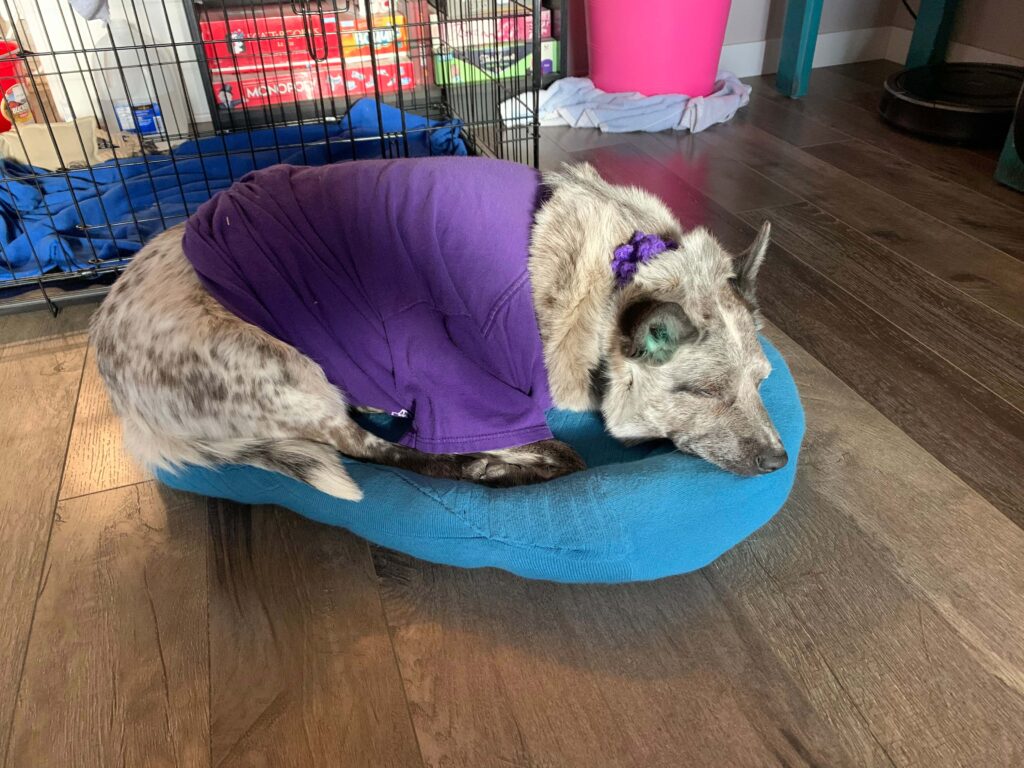
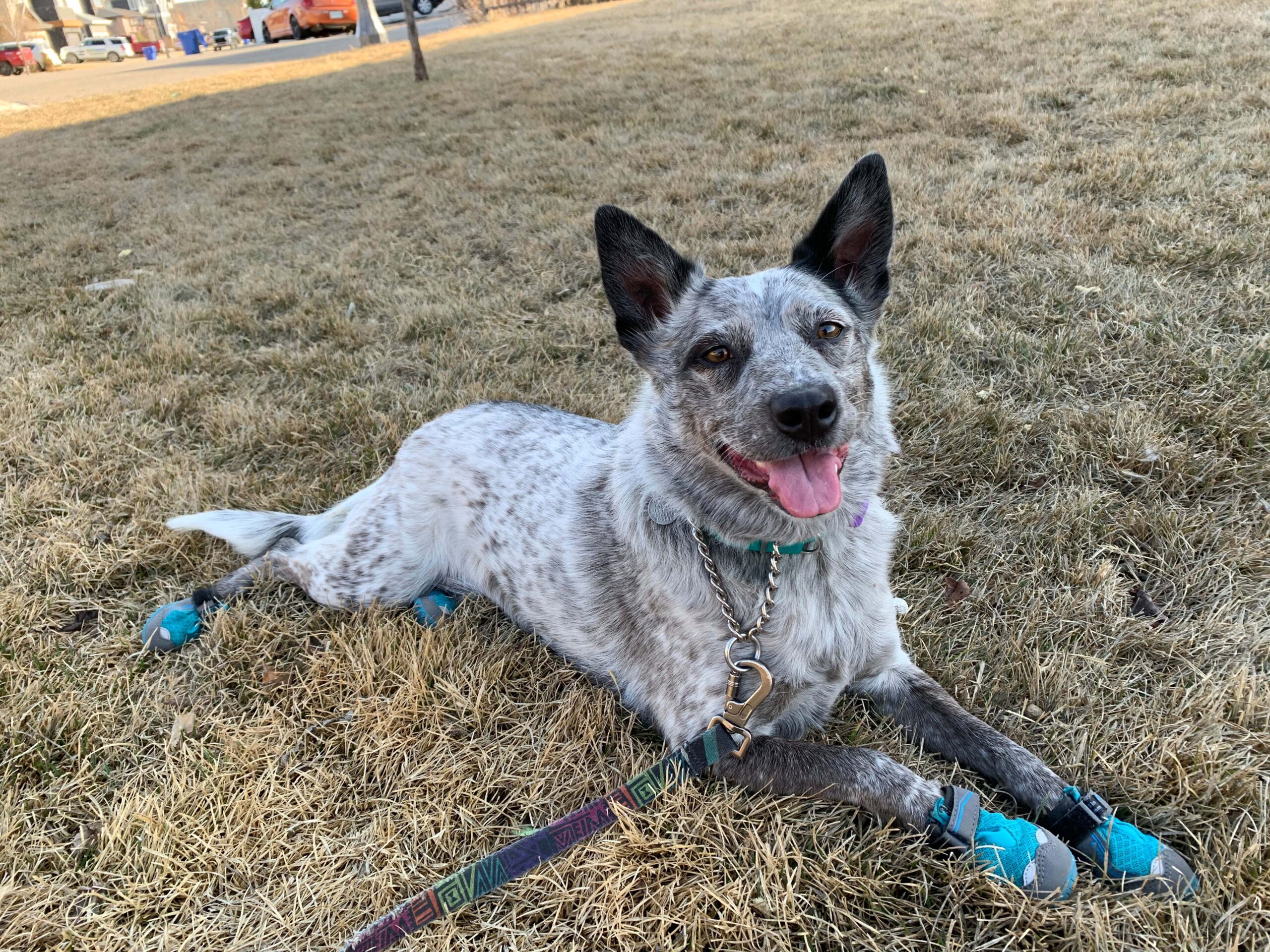
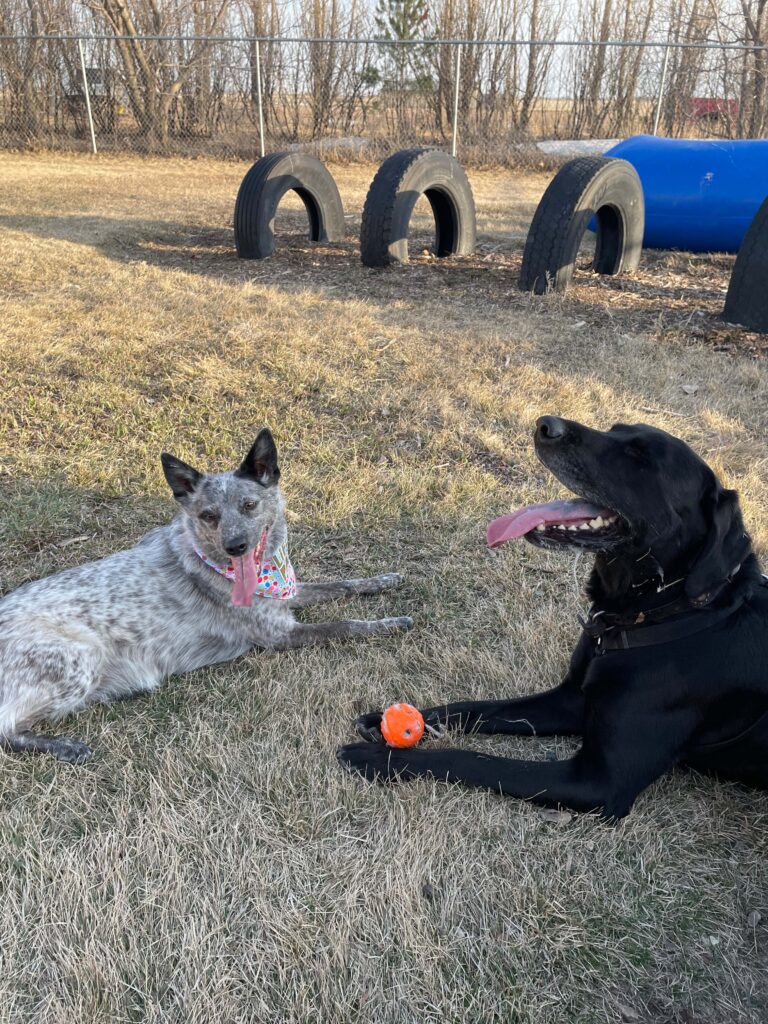

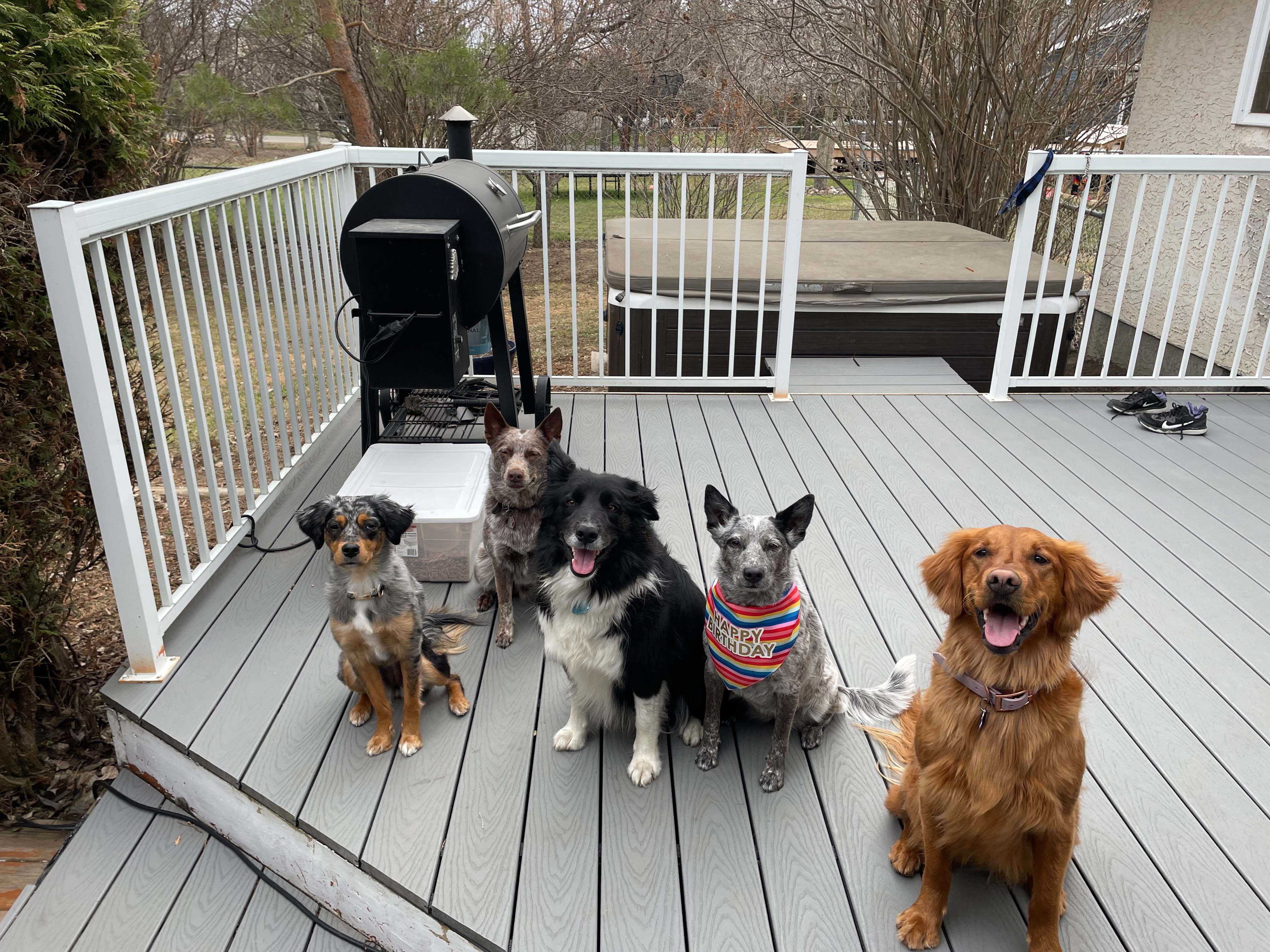
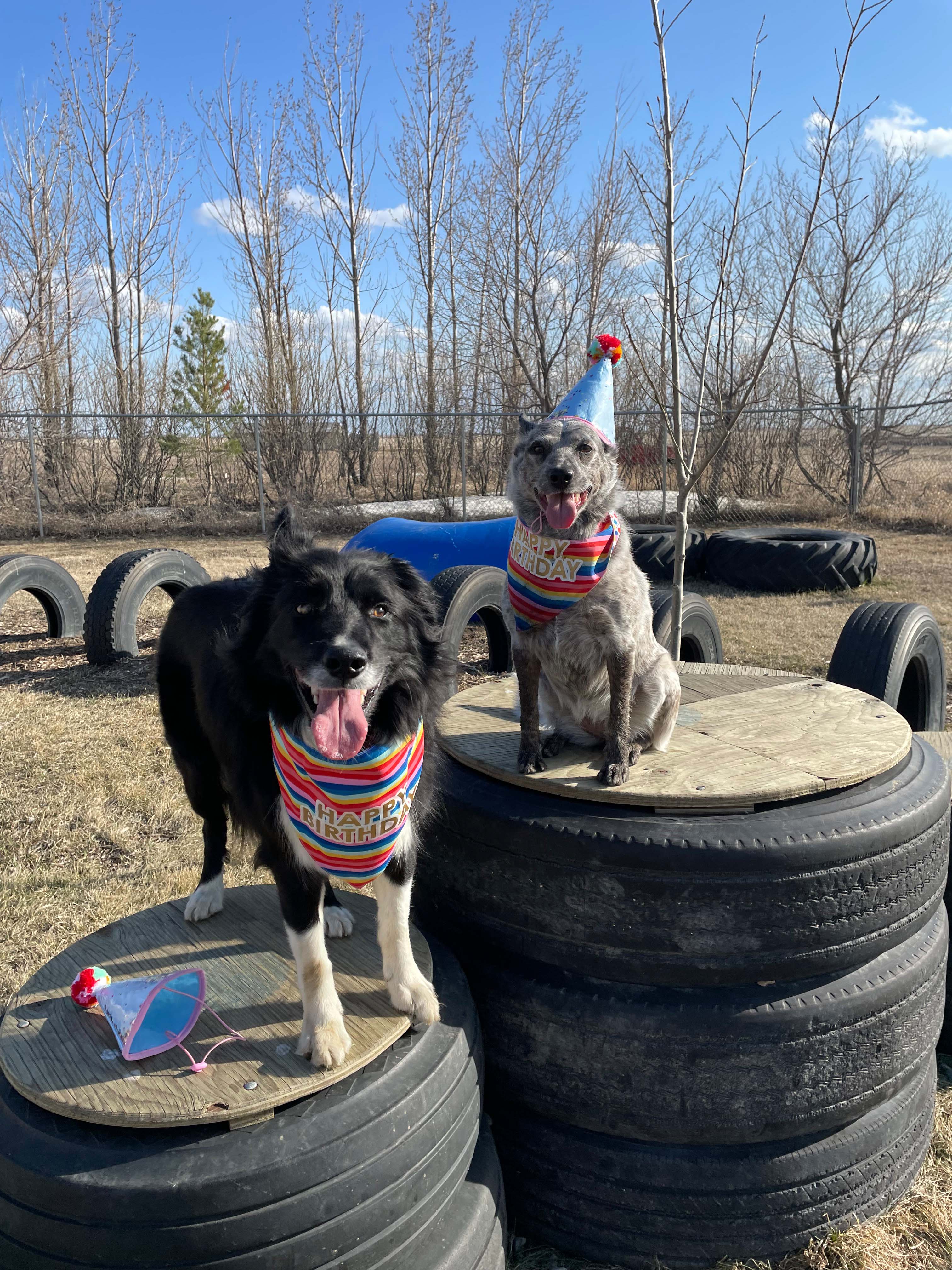
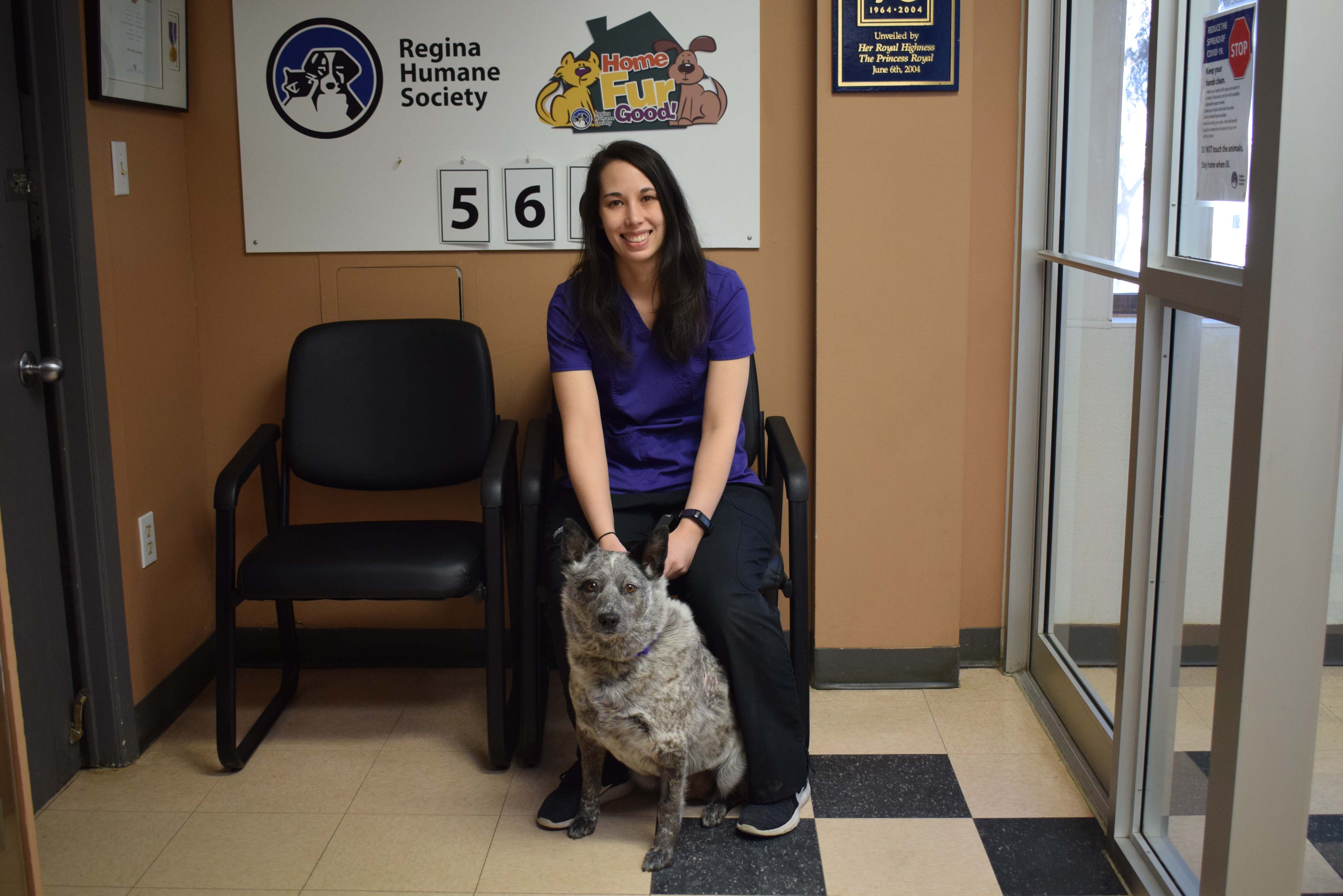
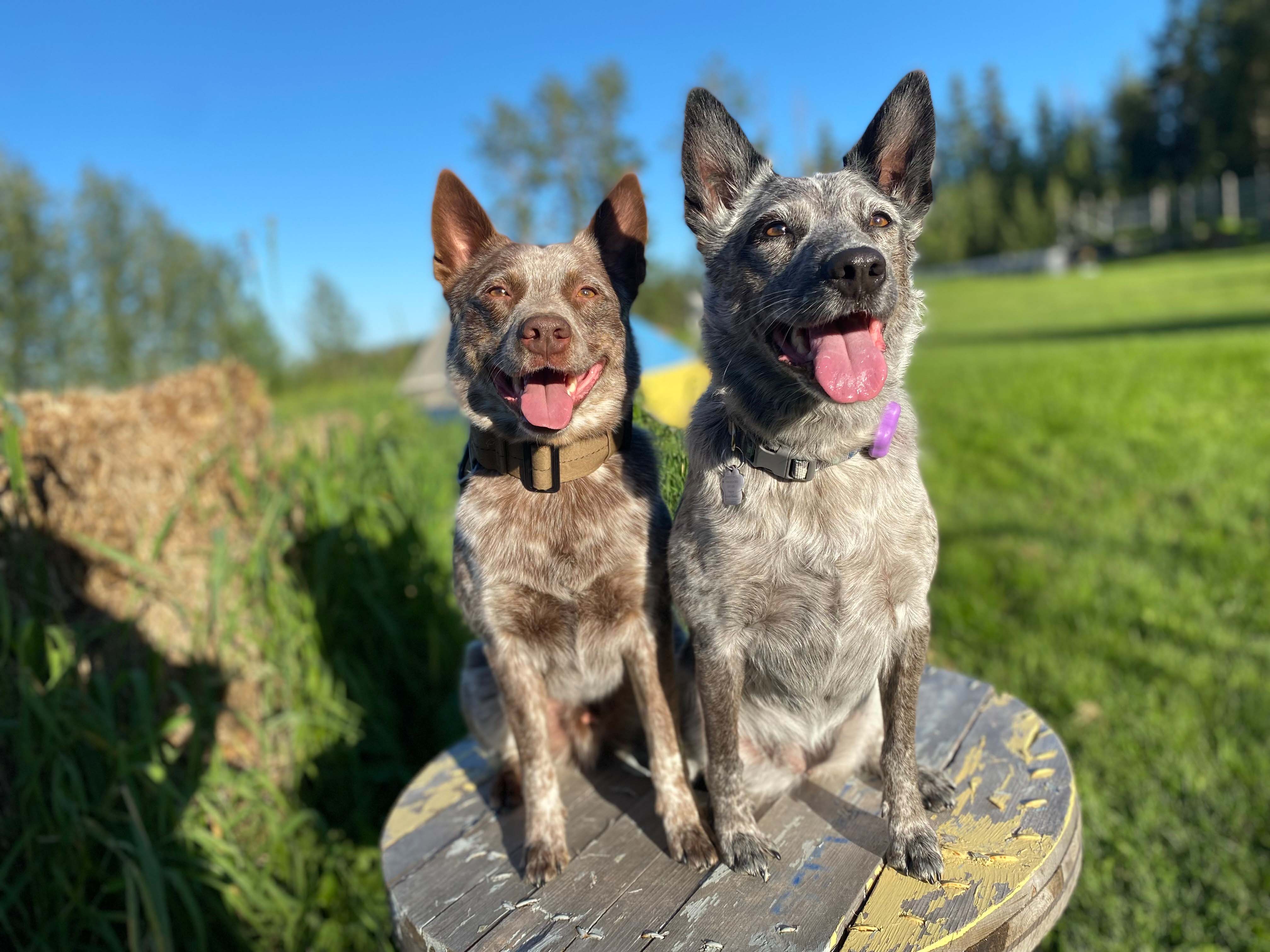
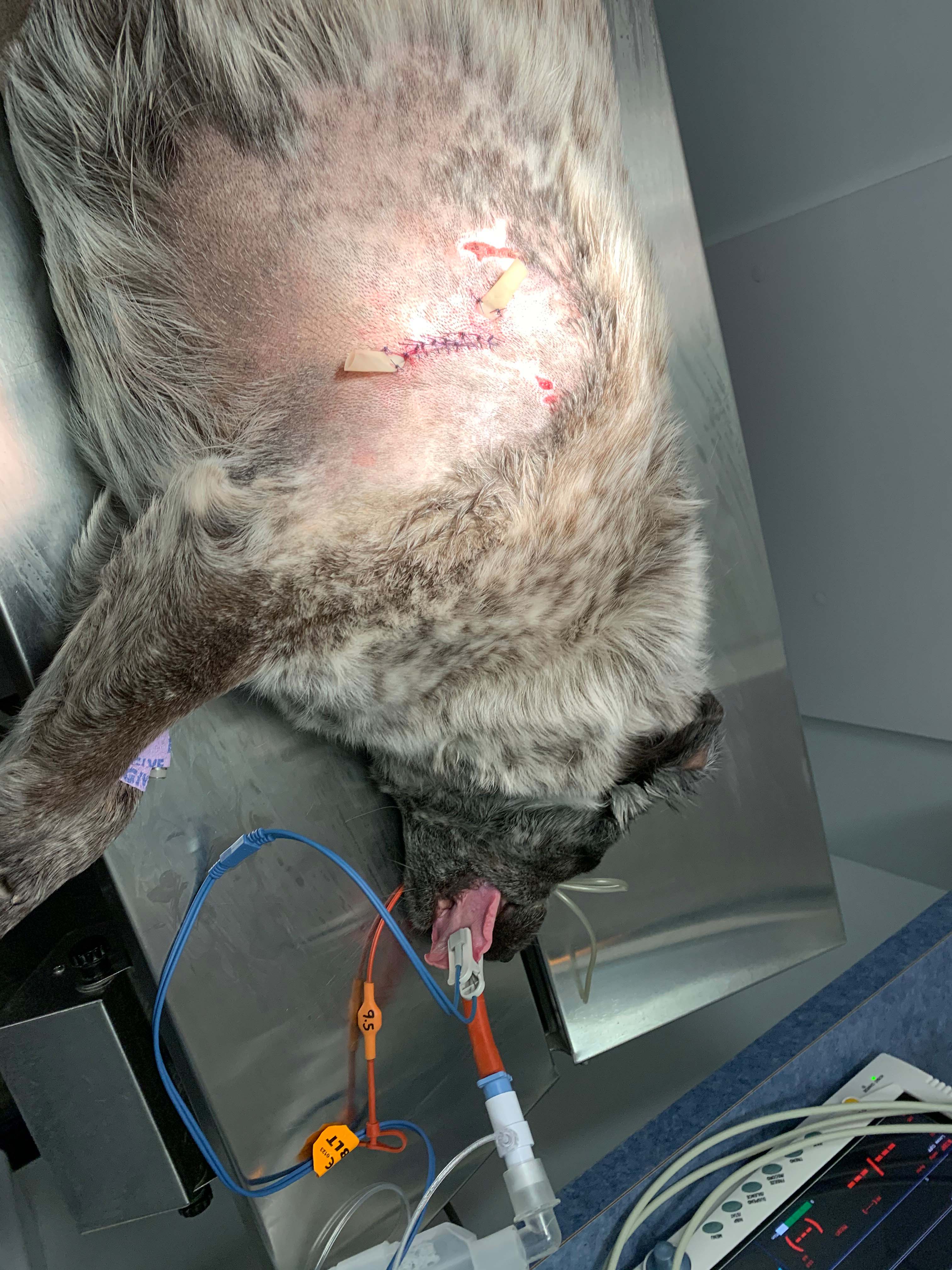
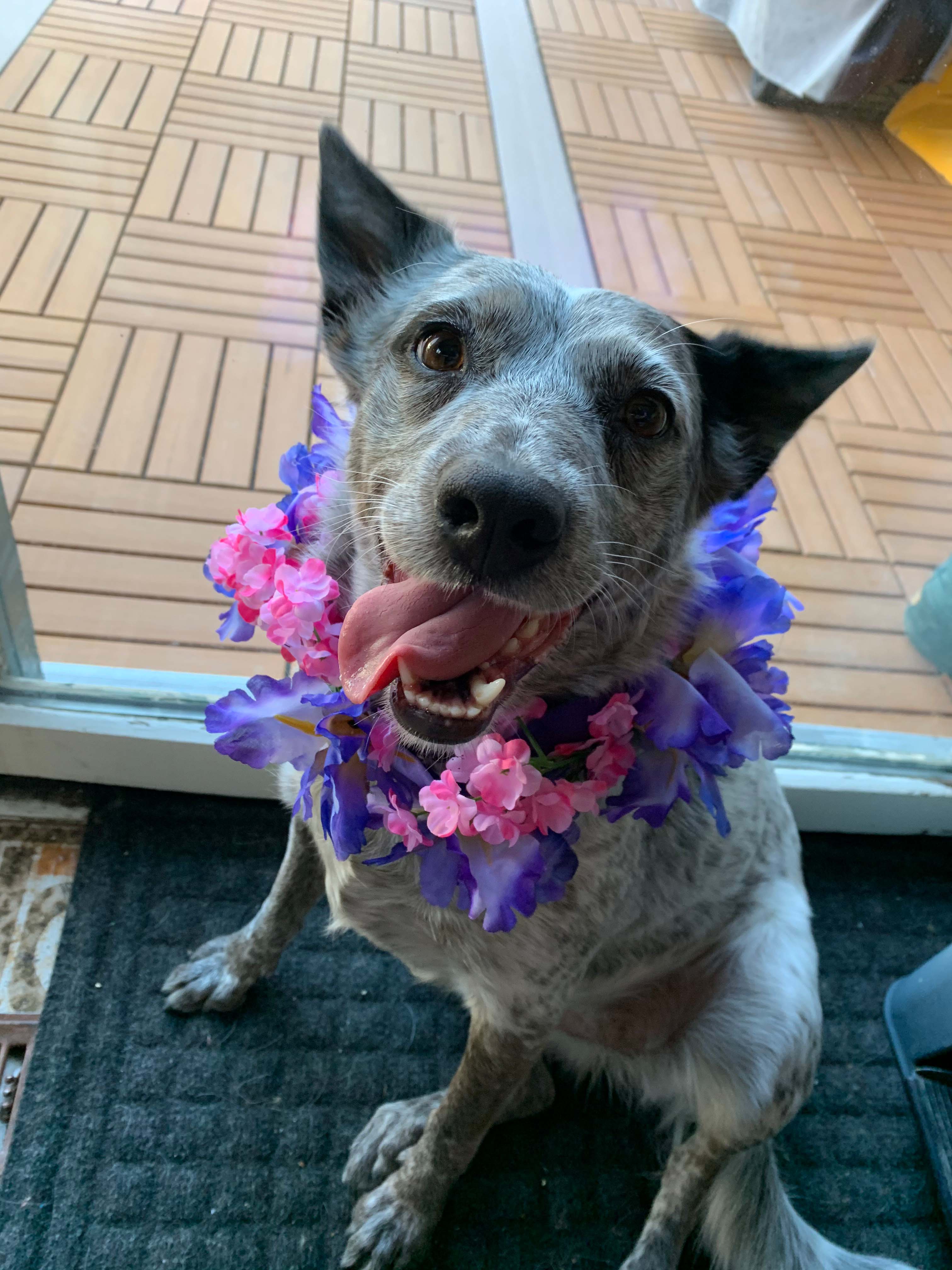
If you own a reactive or difficult dog I hope what I’ve written here inspires you to not give up. Things WILL get better and you’ll be a better person for having gone through it. If you’re lucky enough to own a “perfect” dog I hope this inspires you to adopt a rescue or special needs dog, help someone else who has a difficult dog, or show more compassion when you see someone else struggling with their dog or life, in general. Because, if Sami’s taught me anything, it’s that the more positivity we put out into the world, the more we get back in return!
Special thanks to Emily Garland and all the trainers and students from the Regina Humane Society Dog Training Program, as well as the trainers and members of Kaos Dog Sports whose constant kindness and support have helped Sami and I get to where we are today. Sami would also like to thank her best canine friends Bark, Bailey, and Guinness (and their owners) for believing that she was a “good dog” and giving her a chance when she needed it the most.
With Gratitude,
Sydney

